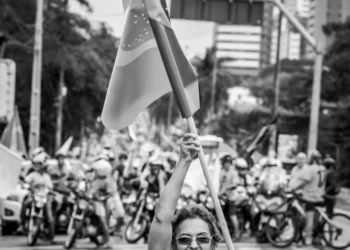Editor’s note: This is the first part of a two-part series on Brazilian Electoral Reforms.
by Eric Nogueira Andrade
Reviewed and translated by Matheus Lucas Hebling
Historical background
Independent in 1822, Brazil would have its first Constitution in 1824, establishing a majoritarian and not very inclusive electoral system, like most democracies of the time. In the imperial political system, power was highly concentrated, and it was the emperor’s prerogative to dissolve the Chamber of Deputies (which happened frequently) and appoint senators. [1]. During the Empire (1824-1889), electoral rules varied between versions of majoritarian electoral systems. This pattern did not change with the First Republic (1889-1930). More relevant than the majority option for electoral results were the recurring electoral frauds added to the massive exclusion of citizens from the electoral process and the non-secret vote [2]. The debate over the adoption of a proportional model in the country took place during the tumultuous years of the 1930s, a fact that would mark the choices regarding subsequent electoral rules. The majority model would be replaced by the proportional model after an armed movement, which began on October 3, 1930, and which would overthrow the current government, with the aim of putting an end to the First Republic in Brazil, also known as the “Old Republic.” This movement, of a revolutionary nature, would inaugurate the Second Republic in Brazil and would bring with it profound changes in the electoral rules.
Electoral reforms of the 1930s
In December 1930, a commission was created to study and propose a reform of the electoral system, one of whose members was the gaucho Joaquim Francisco de Assis Brasil, one of the main Brazilian thinkers on representative democracy , and a great defender of the adoption of proportional representation in the country.
The commission completed the drafting of Brazil’s first Electoral Code in 1932, and the electoral system would work as follows: voters would take a ballot to the ballot box with a list of names corresponding to the number of seats in the state’s Chamber of Deputies plus one. For example, in a state with four representatives, voters could submit up to five names. The election took place in two rounds: in the first, the name or party printed on the first part of the ballot paper would be counted. Separated by a line, in the second round, the number of names corresponding to the number of seats in the constituency would be counted. In the example of a state with four representatives, there would be one name above the line (first round) and four below it (second round). It was established that the votes from both rounds would not be added together (CABRAL, 1934, p. 101-106).
The counting took place in two stages. In the first, the seats were distributed among the lists according to the electoral quotient. [3]. The seats that were not filled in the first round should be filled by the simple majority system, with the names from the constituency not elected in the first round and who received the most votes being elected. In the overwhelming majority of cases, this system would give the remainder to the party that obtained the highest number of votes (NICOLAU, 2012, p. 82-83). The complexity of this electoral system, however, was a reason for its revision.
Thus, the first version of an open-list proportional model would be instituted in the country through the revision of the 1932 Electoral Code in 1935, which gave rise to Law No. 48 of May 4 of the same year. The original idea was to strengthen political parties, promote voting rights (extending them to women), create an electoral court, adopt secret voting, adopt a proportional representation system, and require candidates to be registered before election day.
Despite all the work of the 1932 commission, the 1934 constituent assembly, and the 1934-35 revision commission, the emergence of the Estado Novo and the suspension of political parties in 1937 made it impossible for the new electoral system to be used in an election. [4]. Thus, it was only in 1945 that the open list proportional electoral system came to be used in the country for the first time.
Thus, the so-called “Agamenon Law” (Decree Law No. 7586/45) had many similarities with the electoral system established in 1935. Naturally, it would reestablish the nominal vote, but this time it would exclude the possibility of independent candidacy.
Notes:
[1]The voters presented a list of three names, and it was up to the emperor to choose one.
[2]Initially, the vote had to be publicly expressed, and different forms of voting were instituted over the decades. None, however, was utterly secret until the drafting of the 1932 Electoral Code.
[3]Pre-1945 legislation ensured that any independent candidate (without a party) who reached the electoral quotient would also be elected.
[4]There were elections in 1933 for the constituent assembly and in 1934 for the State Chambers and Constituent Assemblies, using the electoral model designed in 1932, which proved to be excessively complex and controversial. Later, in 1935, there were also elections for governors and the Senate, but the electoral system for these elections was of a different type, majoritarian.
Andrade, Eric Nogueira. 2025. "The Evolution of Electoral Reforms in Brazil: A Historical and Analytical Perspective (I)". Brazilian Research and Studies Blog. ISSN 2701-4924. Vol. 3 Num. 1. Available at: https://www.bras-center.com/the-evolution-of-electoral-reforms-in-brazil-a-historical-and-analytical-perspective-i/, accessed on: December 15, 2025.








